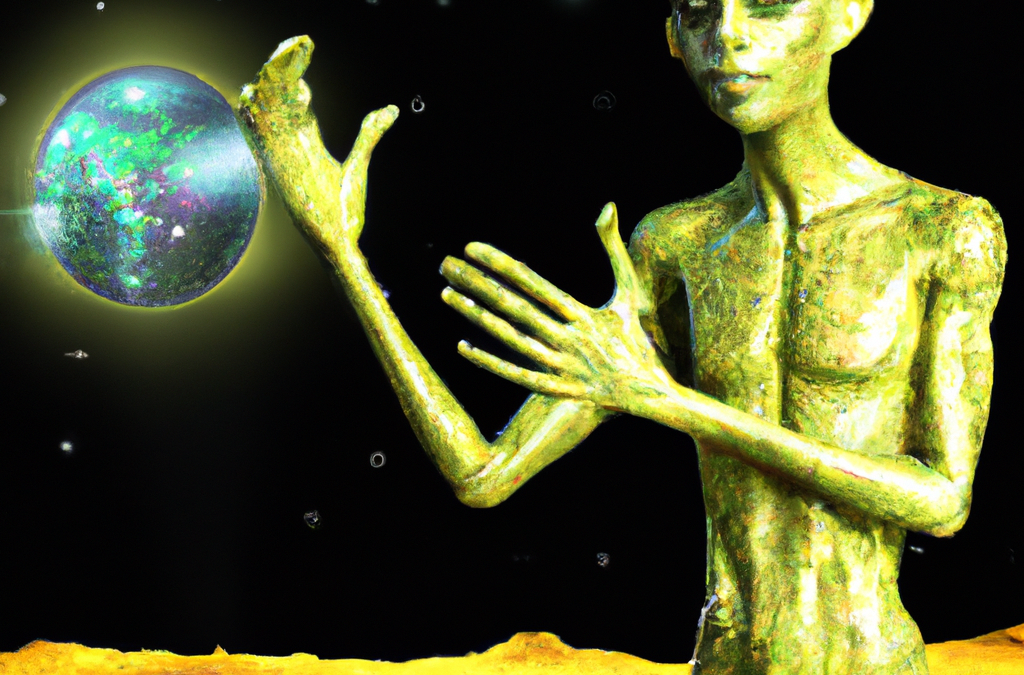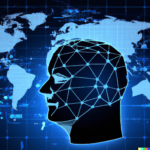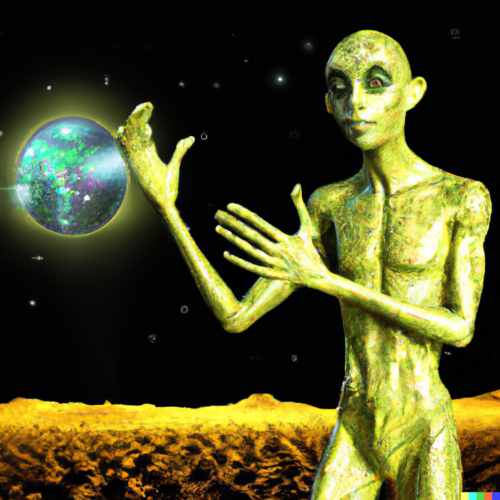
AI: Getting Started With Three Questions
1. Why did Elon Musk purchase ‘Twitter’ aka. ‘X’?

AI-generated image
Produced by DALL-E by OpenAI Labs
Using the prompt:
“Artificial intelligence dominates the new world”
Yes, this question does belong in our list of AI-related questions.
Do you think Elon Musk bought Twitter because he wanted to own one of the more than 250 social networking services? Maybe.
Or because his ultimate goal was to have a cage match with Mark Zuckerberg for eccentric billionaire dominance? This seems more plausible than wanting to compete with Facebook and the others for social media dominance.
We offer – what we believe is – a more plausible reason than either of those beliefs. Maybe Musk’s “Everything App”, X, formerly known as Twitter, is aiming for Artificial Intelligence dominance over tech giants such as Facebook, Google, Microsoft, and Apple… combined. Crazy? Yes. But, so is a man who named his first child X Æ A-Xii, grouped his Tesla cars into four models: Model S, Model 3, Model X, and Model Y and sells the accompanying ‘S3XY’ hoodie, launched a Tesla Roadster into space playing David Bowie’s song “Space Oddity” on the radio with a mannequin – named “Starman” – in a spacesuit sitting in the driver’s seat, and launched Starlink – over 5,000 satellites (so far) – as part of an internet constellation operated by SpaceX, just to name a few (of many).
If you’d like us to post more on this Musk – X – AI theory, please let us know.
2. Should Artificial Intelligence now be called Alien Intelligence?

AI-generated image
Produced by DALL-E by OpenAI Labs
Using the prompt:
“Alien intelligence dominates the new world”
If you are not yet familiar with Yuval Noah Harari, we recommend correcting this oversight.
To get us started, some definitions for consideration:
- Artificial – made or produced by human beings rather than occurring naturally, especially as a copy of something natural.
- Alien – a foreigner, especially one who is not a naturalized citizen of the country where they are living.
- Natural – existing in or caused by nature; not made or caused by humankind.
- Naturalized – (of a plant or animal) having become established and living wild in a region where it is not indigenous.
The term “Artificial Intelligence” was appropriate when first coined in 1956 by John McCarthy at the Dartmouth Summer Research Project on Artificial Intelligence (DSRPAI). Human beings were creating intelligence that was not natural. However, we’ve come a long way since the early days of Neural Networks and Machine Learning.
Neural Networks and Machine Learning were inspired by the way the human brain is structured and the way humans learn. These days, machines are learning more from each other than their human creators. And they are discovering our methods can sometimes be primitive due to our biological limitations.
For example, in 2013, DeepMind demonstrated how AI had surpassed human abilities in the game Pong. This was mostly thanks to human design.
For – what is believed to be – the world’s oldest board game, Go, originating around 4,000 years ago, human design was not enough. AlphaGo started playing machine vs. machine (AlphaGo Zero vs. AlphaGo Lee) to improve its intelligence beyond anything a human could design.
If machines are now learning from other machines, and developing intelligence beyond our human brain’s comprehension, is their intelligence still artificial, or has it become alien?
“AI is an ‘alien intelligence’ that is as foreign to us as it is familiar, challenging the notion that AI will simply mimic human appearance or tasks.” – Yuval Noah Harari
Videos for continuing your Yuval Noah Harari journey
AI and the future of humanity
For those who want to learn a lot (41:21)
The Oppenheimer Moment of AI
For those who want to learn a little (10:02)
3. Who are the most influential people in AI?
TIME did the heavy lifting here. They compiled a list of their 100 most influential people in AI; and even grouped them into four categories: Leaders, Innovators, Shapers, and Thinkers. We selected one from each category to highlight.
Leader:  Clément Delangue
Clément Delangue
CEO and Co-Founder, Hugging Face
We selected Clément Delangue because his company has the best name – Hugging Face. Well, that and because we plan to discuss closed source (proprietary) AI vs. open source AI in a future post, and Hugging Face is an open source David attempting to go up against the big tech Goliaths.
Learn more about Clément Delangue.
Innovator:  Kate Kallot
Kate Kallot
CEO and Founder, Amini
We selected Kate because it’s important to keep in perspective the fact that the challenges and opportunities resulting from AI are global; not just something that affects us here in the U.S. where the largest tech firms exist. This young entrepreneur’s mission is to fix the critical issue facing many countries like Kenya: a lack of data.
Learn more about Kate Kallot.
Shaper:  Verity Harding
Verity Harding
Director of the AI & Geopolitics Project, Cambridge University
We selected Verity because governments will play a huge role in the future of AI, and she understands the intersection between emerging technology and democracy. Verity says, “AI is too important just to be left to the AI community alone. It needs to be more widespread.” We at Data Directions agree with her.
Learn more about Verity Harding.
Thinker:  Max Tegmark
Max Tegmark
Co-Founder and President, Future of Life Institute
We selected Max because he’s an old favorite of ours. We follow his “Future of Life Institute“, founded in 2014, and believe in its mission of “steering transformative technology towards benefitting life and away from extreme large-scale risks.” We also highly recommend reading his 2017 book, “Life 3.0“.
Learn more about Max Tegmark.
Have a look at TIME’s full list and let us know if you’d like us to share more research on any of these influencers in a future post.
Have any topics you’d like to learn more about? Please reach out to us and we’ll research it for you in a future blog post.
